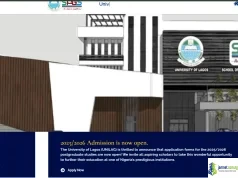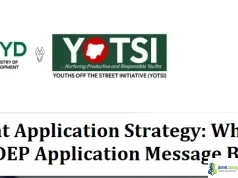Explore the two application tracks for the prestigious Global Korean Scholarship (GKS) Embassy Track And University track. This comprehensive guide explains the key differences, quotas, application processes, and helps you decide which track is best for you


The Global Korea Scholarship (GKS), also known as the Korean Government Scholarship Program (KGSP), is one of the most prestigious scholarships available for international students aiming to study in South Korea for free.

Join our Telegram Channel for Instant Scholarship Updates
Unlike most other scholarships, the application process offers two distinct pathways: the Embassy Track and the University Track. While the scholarship benefits are identical for both, the application process and chances of selection vary significantly. For general tips on how to apply for scholarships successfully, see this guide.
This guide will explain the differences between these two tracks to help you make the best decision for your application.
Key Differences Between the Two Tracks: Global Korean Scholarship (GKS) Embassy Track And University track
The primary difference between the two GKS application tracks is the application process itself.
Embassy Track
This track involves a three-step selection process:
- Embassy Selection
- National Institute for International Education (NIIED) Selection
- University Selection
Applicants can apply to a total of three universities, which must be accepted in the final stage to receive the scholarship.
University Track
This is a more direct, two-step process:
- University Selection
- NIIED Selection
Applicants can apply to only one university through this track. To be awarded the scholarship, you must be accepted by that single university.
Scholarship Quotas by GKS Scholarship Track
The number of scholarships allocated for each track varies by country. It is crucial to check the specific quota for your country and the application track you prefer.
For example, the quotas for the GKS Scholarship 2026 were as follows:
Embassy Track Quotas (2026)
| Country | Quota |
|---|---|
| Equatorial Guinea | 1 |
| Ethiopia | 1 |
| Fiji | 1 |
| Gabon | 1 |
| Ghana | 1 |
| India | 2 |
| Indonesia | 2 |
| Iran | 1 |
| Jordan | 1 |
| Kazakhstan | 1 |
| Kenya | 1 |
| Kyrgyzstan | 1 |
| Laos | 1 |
| Madagascar | 1 |
| Malaysia | 1 |
| Mexico | 1 |
| Syria | 1 |
| Tajikistan | 1 |
| Tanzania | 1 |
| Thailand | 1 |
| Timor-Leste | 2 |
| Trinidad and Tobago | 1 |
| Turkey | 1 |
| Turkmenistan | 1 |
| Uganda | 1 |
| Ukraine | 1 |
| Uruguay | 1 |
| Uzbekistan | 1 |
| Venezuela | 1 |
| Vietnam | 2 |
| Yemen | 1 |
| Zimbabwe | 1 |
| Total | 82 |
University Track Quotas
The University Track offers scholarships for both Associate and Bachelor’s degrees.
| Category | University | Department | Quota |
|---|---|---|---|
| Bachelor’s Degree<br>(10 institutions) | Ajou University | Software and Computer Engineering | 100 |
| Daegu University | Division of Electronic Engineering | ||
| Dong-A University | Food Science and Nutrition<br>Medicinal Biotechnology | ||
| Inje University | AI Software<br>Food Nutrition and Food Engineering<br>Medical Information Technology<br>Mechanical and Electrical Automotive Engineering | ||
| Keimyung University | Mechanical Engineering | ||
| Konyang University | Artificial Intelligence<br>Smart Security | ||
| Kookmin University | Software | ||
| Korea University of Technology and Education (KOREATECH) | Mechanical Engineering Major<br>Computer Engineering Major | ||
| Sungshin Women’s University | Statistics/Big Data Science Major | ||
| Yeungnam University | Environmental Engineering | ||
| Associate Degree<br>(3 institutions) | Dong-Eui Institute of Technology | Electrical Engineering<br>Mechanical Engineering | 30 scholars from 71 countries |
| Kyungbok University | Software Convergence | ||
| Osan University | Mechanical Engineering |
Application Process Breakdown
Here is a detailed look at the application process for each track.
A) Embassy Track
The Embassy Track allows applicants to apply to up to three universities, which can increase the overall chance of acceptance.
- Round 1: Embassy Selection The first selection round is based on nationality and the number of applications received in your country. Countries with fewer applicants may offer a higher chance of selection.
- Round 2: NIIED Selection Once selected by the embassy, your application is forwarded to NIIED for further evaluation. NIIED reviews the quality of your application and may reject some applicants at this stage.
- Round 3: University Selection Your application is then sent to the three universities you selected. Some universities may conduct interviews, while others will not, depending on the department. You must be accepted by at least one of these universities.
B) University Track
Applicants for the University Track must apply directly to the Korean university they are interested in. It is important to frequently check the university’s website for specific requirements and deadlines, as these can vary.
- Round 1: University Selection In this round, you are competing directly against other students from around the world who are applying to the same university, making it highly competitive. The selection process is rigorous, and most universities will conduct an interview. If you do not meet the university’s expectations, your application may be eliminated quickly.
- Round 2: NIIED Selection NIIED makes the final selection of scholars based on the quotas allocated to each country. For example, if two students from the same country are accepted by their chosen university, but their country’s quota is one, NIIED will review both applications and select only one as the final scholar.
Required Documents
The official GKS application form and required documents are comprehensive. To ensure your application is complete, you must prepare the following items:
- Official Application Form: A completed form with your personal information and academic history.
- Academic Documents: Official academic transcripts and diplomas from all previous degrees. For graduate applications, this includes your bachelor’s degree. If you have a low GPA to explain, this can be done in your personal statement.
- Letters of Recommendation: Two sealed letters from professors or employers. For help with this, here is a guide on how to ask for a recommendation letter for a scholarship.
- Passport or Citizenship Copy: A copy of your passport or other valid ID to prove your nationality.
- Personal Statement and Study Plan: These are critical documents that allow you to articulate your motivations and academic goals. Your personal statement can address why you deserve this scholarship, while your study plan should be a logical outline of your academic goals.
- Research Proposal: For graduate applicants, especially those on the University Track, a detailed research proposal is a key part of your application.
- Proof of Language Proficiency: Any certificates for English or Korean proficiency, such as an IELTS or TOPIK score. For information on standardized tests like the GRE, this guide can be helpful: Do you need the GRE to study abroad?.
Key Application Components
Your Personal Statement and Study Plan are your chance to tell your story and impress the selection committees. They should not simply be a rehash of your resume.
- Personal Statement: This document is about your personal journey. You should explain what has motivated you to apply for the GKS and why you are the best candidate for the scholarship. Use concrete examples to illustrate your passion and experiences.
- Study Plan: Your study plan should be a detailed, logical outline of your academic and professional goals. It should explain what you intend to study in Korea, how it connects to your previous studies and future career, and your plans for both during your time in Korea and after graduation. Learn how to write a scholarship essay that wins to help you with these components.
- Research Proposal (for graduate applicants): Your research proposal should be a clear, concise outline of the research topic you wish to pursue. You must demonstrate a clear understanding of your field, the research question you want to answer, your proposed methodology, and the potential impact of your research. This is especially important for the University Track, as it proves to the university that you are a serious and committed researcher. For more on what selection committees look for, consider the top qualities of scholarship winners.
Application Timeline and Language Requirements
The GKS application process has a strict timeline that you must follow. While specific dates can vary, the process generally runs as follows:
- February/March: The GKS guidelines for the year are announced.
- March/April: The application period opens for both the Embassy and University Tracks.
- May/June: First-round selection results are announced.
- July: Second-round interviews and university acceptances.
- August: Final announcements and visa applications.
Regarding language requirements, the GKS does not have a formal English proficiency requirement. However, having a strong English proficiency test score (like IELTS or TOEFL) can be a significant advantage, particularly if your previous education was not conducted in English. Similarly, having a high score on the Test of Proficiency in Korean (TOPIK) is highly valued by both NIIED and Korean universities. A high TOPIK score can not only improve your chances of selection but also exempt you from the mandatory Korean language training, allowing you to start your degree program immediately. For tips on preparing for your move to Korea, here are some student accommodation tips that can be helpful.
Which Track is Better for You?
It is not possible to say that one track is universally better than the other. The best choice depends on your personal circumstances, including your country, your academic record, and your preferences. To help you decide, here are some questions to ask yourself:
- If you have your heart set on a specific university, applying through the University Track is often the better option. It allows you to tailor your application, particularly your motivation letter, to that single university.
- If your academic grades are not the highest, applying through the Embassy Track may be more strategic. You have three chances to be accepted, and you can increase your odds by choosing at least one lesser-known university among your selections.
- For a doctoral degree (PhD), the University Track may be more beneficial, as a PhD is a very specific program. Having a researcher or laboratory already express interest in you can significantly improve your chances of being accepted. However, it is still possible to apply through the Embassy Track with the support of a specific laboratory.
Ultimately, consider your unique situation and choose the track that you feel will give you the best chance of success.
Frequently Asked Questions
What is the duration of the GKS scholarship? The scholarship is awarded for the duration of the program, which is typically one year of Korean language training followed by two years of degree studies for a master’s program, and three years for a doctoral program.
Is this a fully funded scholarship? Yes, the scholarship provides full tuition, a monthly allowance, and travel costs.
Are there age limitations for applicants? Yes, applicants must be under 25 years of age for undergraduate programs and under 40 for graduate programs.
Do I need an acceptance letter from a university before applying? For the University Track, you apply directly to the university. For the Embassy Track, you apply through the embassy first and then are considered for university admission.
How do I choose between the two tracks? Your choice depends on your specific goals. If you have a strong preference for a single university and believe you are a highly competitive candidate, the University Track may be for you. If you want more options, the Embassy Track allows you to apply to three universities.
What is the main difference in the selection process? The Embassy Track has a three-round selection process involving the embassy, NIIED, and universities. The University Track has a two-round process involving the university and NIIED.
What documents are required for the application? You will need to submit an official application form, academic transcripts, letters of recommendation, a passport copy, and a personal statement and study plan, among other documents.
Is a high TOPIK score required? A high TOPIK score is not required, but it is highly valued and can exempt you from the mandatory Korean language training.
Can I apply for both tracks at the same time? No, you can only apply to one track per application period.
What is NIIED’s role in the selection process? NIIED, the National Institute for International Education, is responsible for the final selection of scholars after the first round of screening by either the embassy or the university.













